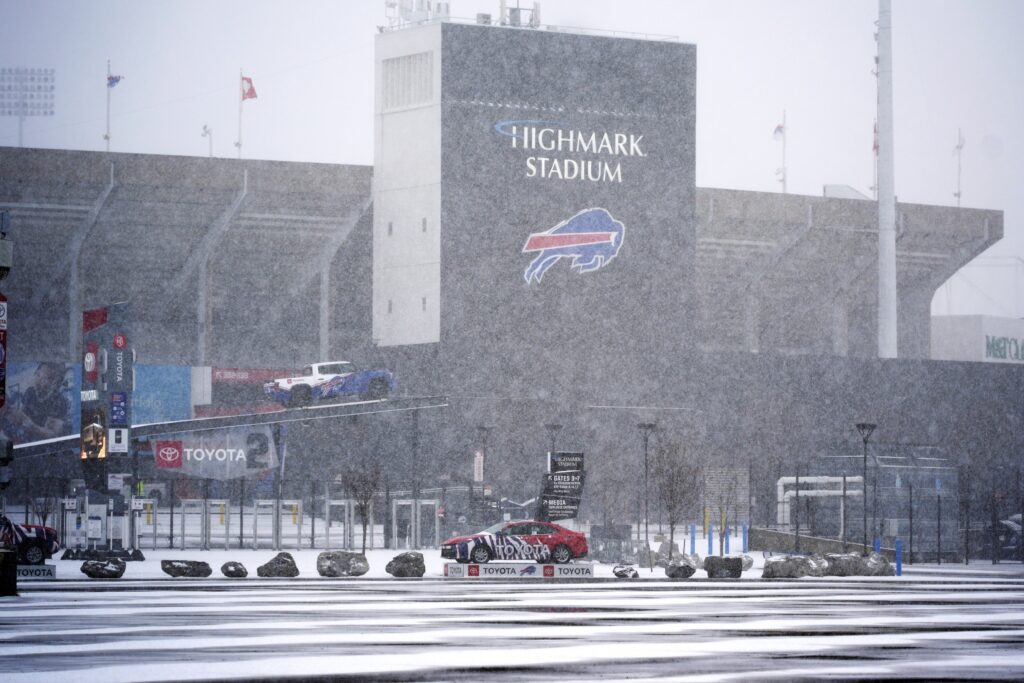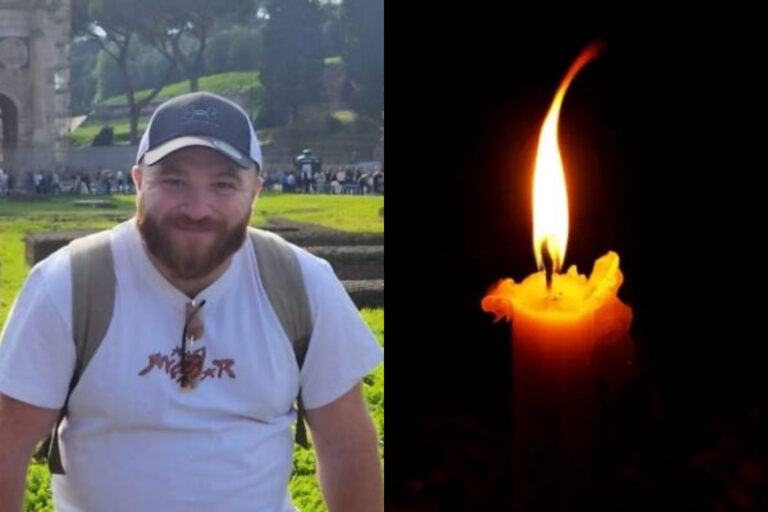The first big snowfall of the season is blanketing towns along Lake Erie in upstate New York and northwestern Pennsylvania in the middle of the hectic holiday travel and shopping weekend, while numbing cold and heavy snow could persist into next week and cause hazards in the Great Lakes, Plains and Midwest regions.
The heavy snow has led to a state of emergency declaration in parts of New York and a disaster declaration in Pennsylvania, with officials warning of dangerous conditions for Thanksgiving travelers trying to return home.
“Travel will be extremely difficult and hazardous this weekend, especially in areas where multiple feet of snow may accumulate very quickly,” the National Weather Service said Saturday.
Part of I-90 in Pennsylvania was closed Saturday, as were westbound lanes of the New York Thruway heading toward Pennsylvania. Nearly two feet (61 centimeters) of snow have already fallen in parts of New York, Ohio and Michigan and some 29 inches (73 centimeters) of snow was recorded in Pennsylvania’s northwestern tip.
The roads in parts of northwestern Pennsylvania became so impassable early Saturday that scores of people took refuge overnight in the lobby and hallways of a fully booked Holiday Inn hotel near I-90. Jeremiah Weatherley, a staffer at the hotel, said dozens of people rolled in as the snow piled up, with workers opening the hotel’s conference room and giving people blankets so they could sleep on the floors.
“It was hard to manage but we had no choice,” he said. “They just showed up and we don’t want to turn people away.”
Weatherley said he was making people bagels and handing out juice and cereal on Saturday morning, as the group pitched in to help one another dig out their cars from the heavy snow.
“Everyone helped each other,” he said. “It was pretty cool.”
This week’s blast of frigid Arctic air also brought bitterly cold temperatures of 10 to 20 degrees Fahrenheit below average to the Northern Plains, the weather service said. That prompted cold-weather advisories over parts of North Dakota.
Cold air was expected to move over the eastern third of the U.S. by Monday, the weather service said, with temperatures about 10 degrees below average.
Parts of Michigan were battered by the heavy lake-effect snow, which happens when warm moist air rising from a body of water mixes with cold dry air overhead. Bands of snow that have been rolling off Lake Superior for the past three days had buried parts of Michigan’s Upper Peninsula under two feet (61 centimeters) of snow or more just before noon Saturday, said Lily Chapman, a meteorologist with the National Weather Service’s Marquette, Michigan, office.
She said 27 inches (69 centimeters) was on the ground just northeast of Ironwood, in the Upper Peninsula’s western reaches adjacent the Wisconsin state line. Another two feet (61 centimeters) of snow had fallen in Munising, Michigan, in the Upper Peninsula’s eastern region.
Chapman said the narrow bands of lake-effect snow that snake their way off of the lake, driven by cold northwest winds, can produce wide ranges of snowfall amounts over small geographic areas.
“In some spots in the same town you can see a foot of snow and then just a few miles away you could have over two feet,” she said.
Chapman said the continued lake-effect snow showers could add more than a foot of snow (30.5 centimeters) over Michigan’s eastern Upper Peninsula through Monday morning, with six (15 centimeters) to 10 inches (25 centimeters) or higher in the western Upper Peninsula.
In Pennsylvania, Gov. Josh Shapiro signed a proclamation of disaster emergency. Shapiro said parts of Erie County in northwestern Pennsylvania had already received nearly three feet (one meter) of snow with more expected through Monday night. He said state emergency, police and transportation teams had been on the ground overnight to help to any stranded drivers “and make sure emergency responders can get to folks who need them.”
Pennsylvania State Police responded to nearly 200 incidents during the 24-hour period from 6 a.m. Friday to 6 a.m. Saturday, officials said.
As flakes began flying Friday, New York state forecasters warned 4 to 6 feet (1.2 to 1.8 meters) of blowing and drifting snow could fall in Watertown and other areas east of Lake Ontario through Monday.
After an unusually mild fall, as much as 2 to 3 feet (0.6 to 0.9 meters) of snow were possible along Lake Erie and south of Buffalo from lake-effect bands notorious for pummeling the region with snowfall rates of 2 to 4 inches (5 to 10 centimeters) per hour.
“The lake is 50 degrees (10 degrees Celsius). We’re about six degrees above where we should be this time of year, that’s why we’re seeing these heavy lake-effect events,” Erie County Public Works Commissioner William Geary said. “The outlook for the next two weeks into December, we’ll probably see some more.”
(AP)












One Response
Joe Biden’s last laugh.
Trump support global warming (perhaps a tariff on Canada if they send us polar air).